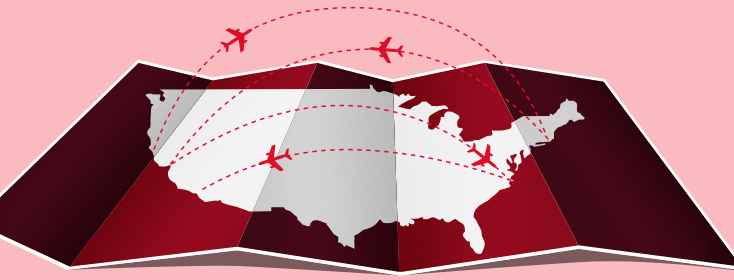Flying, Cancer, and Blood Clots
My first year of chemotherapy seemed like a good excuse to cover some ground that I had long been putting off. It was always difficult to make time to travel, but the urgency of an advanced lung cancer diagnosis pushed the desire to see distant faces to the front of the queue. I toughed out some days when I might have preferred being in bed in order to get on a plane and dodge crowds on my way to connecting flights, making my way from one coast to the other. That was my first year. In my second year, I toned it down, traveled with purpose, but more carefully. In my third year, I put a stop to it. As much as I wanted to fly, I realized there was an increased risk factor that I had been ignoring.
That risk was blood clots.
Understanding and mitigating the risk
Initially, it seemed well worth the risk. With a stage IV lung cancer diagnosis, I knew there was a chance that I would not live very long, and I wanted to make the most of the time I had left. My nurse encouraged me to drink green tea, which prevents blood from clotting, before I got on a plane. But I knew that I could not count on green tea to act as an anticoagulant if I had already developed a blood clot. (As a side note, aspirin also prevents blood from clotting and should not be taken with green tea, as the combination may cause bleeding in some people. And neither should be taken with prescription blood thinners without consulting a doctor first.) Each time I got onto a plane, I was reminded of "Economy Class Syndrome," the increased tendency to develop clots in the legs and feet while immobilized in an airplane seat.
My feet, ankles, and calves were frequently swollen. I had an ultrasound of my legs to check for any deep vein thrombosis (DVT), or blood clot in the leg, but nothing was discovered. My swelling appeared to be mainly from fluid retention; although it came and went with each infusion cycle, the longer I was on chemo, the longer the swelling lingered. At some point, it occurred to me that I might not even be able to tell if I developed a DVT at home, much less on an extended flight.
The cancer-blood clot connection
Cancer, in general, is considered a risk factor for developing blood clots. Blood cancers offer the highest risk, but lung and gastrointestinal cancers are also considered very high-risk, and that risk factor is even higher if the cancer has metastasized. Other risk factors include being sedentary for extended periods of time, something that I had been guilty of during the week following most of my infusions; with the level of fatigue I often had to deal with, making up for lost exercise rarely happened.
Lowering the risk over time
The closer I have gotten to the coveted five-year post-diagnosis mark, the more I envision myself passing it with a decent quality of life ahead. Perhaps I am being overly cautious by refusing to fly, even with compression stockings and green tea in hand. But considering that I have dealt with reduced white blood cell counts, enlarged red blood cells, and years of chemotherapy, being prudent in this regard seems reasonable.
Of course, the longer a patient lives past diagnosis, the lower the risk of clotting becomes. By the fifteenth year, there is no longer a cancer-associated risk for blood clots. Somewhere between now and then, I am sure I will begin flying again -- but with the intent of making it to that fifteen-year mark, and beyond.1-7
We are extremely saddened to say that on October 21, 2018, Jeffrey Poehlmann passed away. Jeffrey’s advocacy efforts and writing continue to reach many. He will be deeply missed.

Join the conversation